Updated: May 6, 2024- 13 min read
With more than 1,500 in-person and 10,000 online attendees joining us from over 94 countries, ProductCon San Francisco 2023 was a fantastic opportunity to connect with Product People from all over the world united by their passion for building great products. The atmosphere was electric and the enthusiasm of our amazing attendees supercharged our busy day packed with a fantastic lineup of speakers.
But if you missed out, don’t worry. We’re here to give you a rundown of all the highlights.
Let’s take it from the top.
Command the Room: Empower Your Team of Product Managers with Effective Communication
Ajay Arora, SVP of Product at Disney, got us off to a fantastic start with his deep-dive on one of the most important skills for Product Managers: communication.
Reflecting on his own transformation from a gadget-focused engineer to a communication-savvy executive, Ajay emphasized the profound impact that honing communication skills can have on a product manager's career.
In this keynote talk, he identified three key pillars for up-leveling communication:
compelling presentations
crisp writing
dynamic discussions
To lead compelling presentations, he stressed that great presentation skills aren't innate but can be developed through practice and techniques like the concentric circle approach, starting from small team meetings and gradually moving to larger stages like TED Talks. He also recommended recording and watching one's own presentations to self-critique and improve.
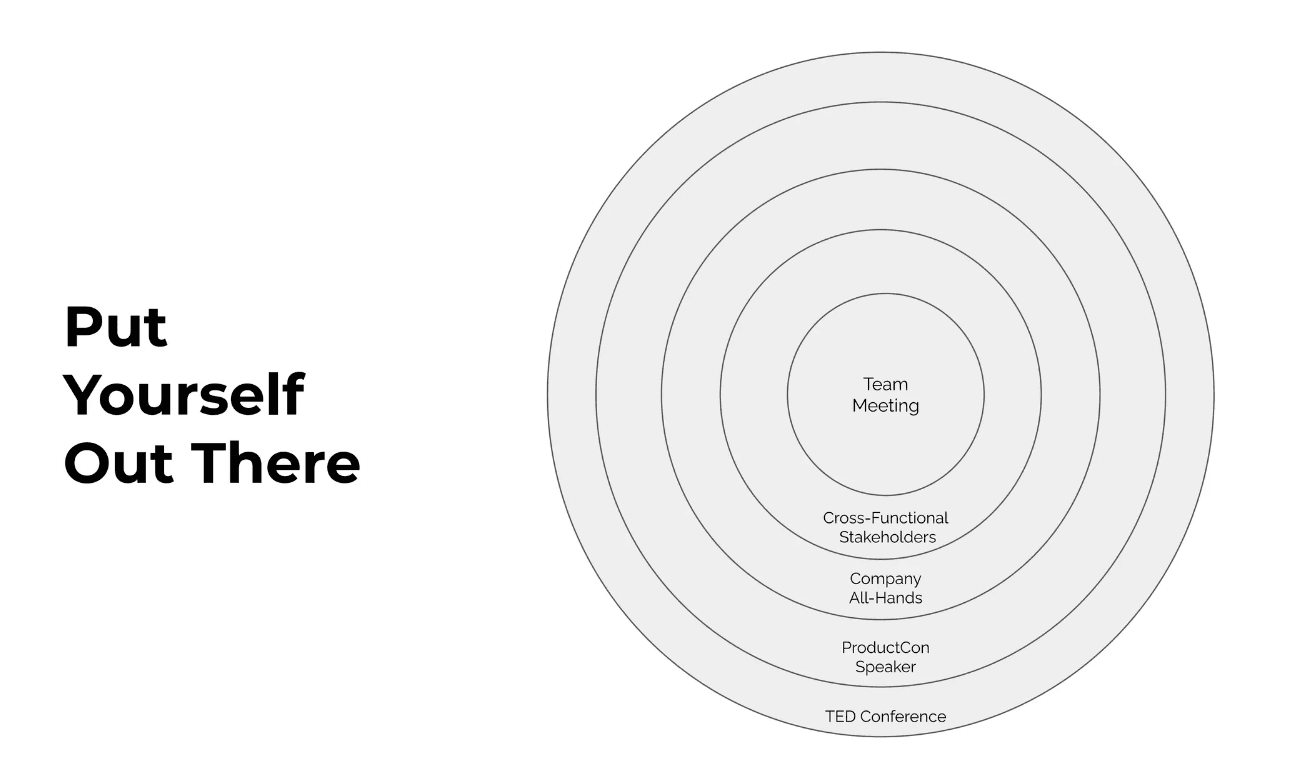
In terms of crisp writing, he underscored the importance of clear, concise memos in driving clarity and decision-making, drawing from his experience at Amazon. According to Ajay,
The golden number is between 150-200 words.
This length is sufficient to capture the attention of busy executives and convey the necessary information. If more details are needed, you can link to a longer memo for those who want to delve deeper.

Finally, for dynamic discussions, he highlighted the importance of focus, active listening, and fostering a collaborative environment in meetings.
For those who want to dive deeper into this topic, check out these book recommendations:
Writing Without Bullsh*t, By Josh Bernoff
Smart Brevity, By J. VandeHei, M.Allen, R. Schwartz
Think Faster, Talk Smarter, By Matt Abrahams
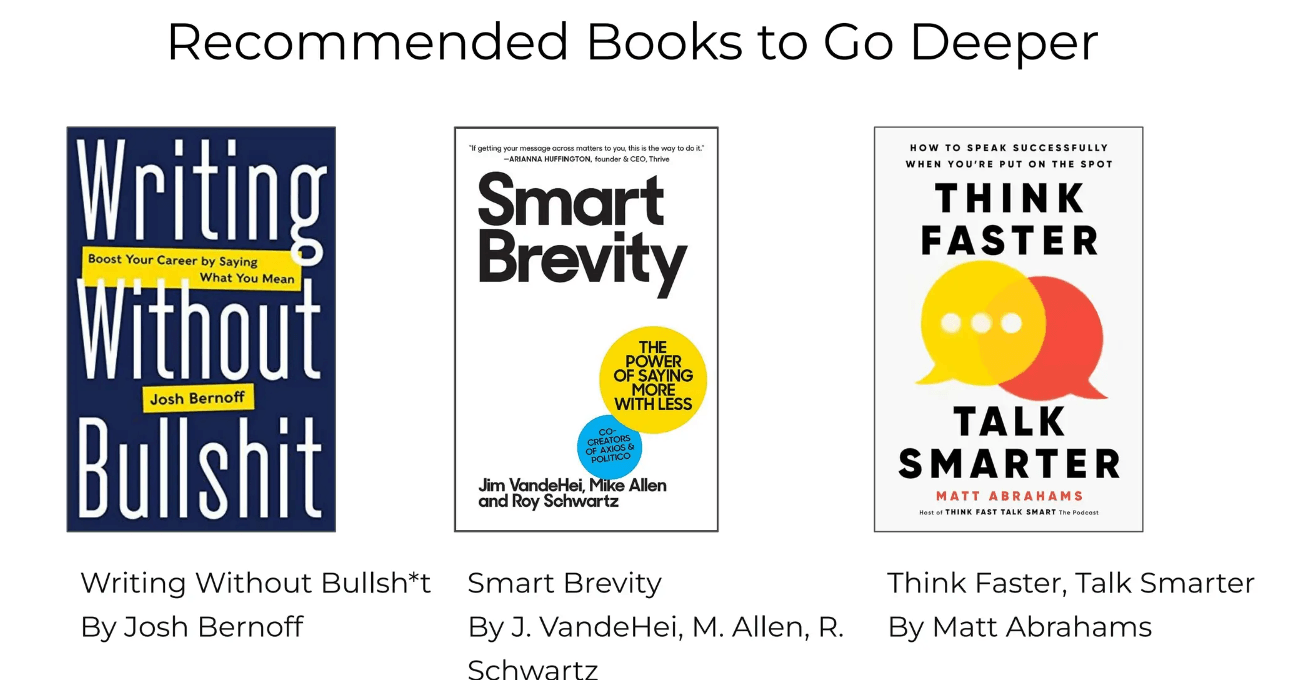
Watch the full talk here:
AI in Action: The New Age of Intelligent Products and Sales Automation
Our keynote speaker was followed by the eagerly awaited presentation AI in Action: The New Age of Intelligent Products and Sales Automation, presented by Head of Sales at Open AI, Aliisa Rosenthal.
Aliisa shared the whirlwind journey and groundbreaking advancements of Open AI’s technology.
We went from 30 leads per week to 10,000.. with three sales reps.
This success story began with OpenAI's mission in 2015 to develop safe and beneficial artificial general intelligence (AGI). They released several models, including GPT-3 and GPT-4, which have been instrumental in various applications.
Aliisa highlighted GPT-4's remarkable capabilities, comparing its impact to the introduction of the graphical user interface, as acknowledged by Bill Gates. OpenAI's focus shifted to customization, allowing users to adapt AI models to specific applications.
The presentation also touched on recent advancements, including ChatGPT Enterprise, a tool offering enhanced privacy and speed. The talk also delved into practical applications of their technology in sales operations, demonstrating its versatility in tasks like territory division and performance analysis.
The talk concluded with this statement from OpenAI’s CEO, Sam Altman:
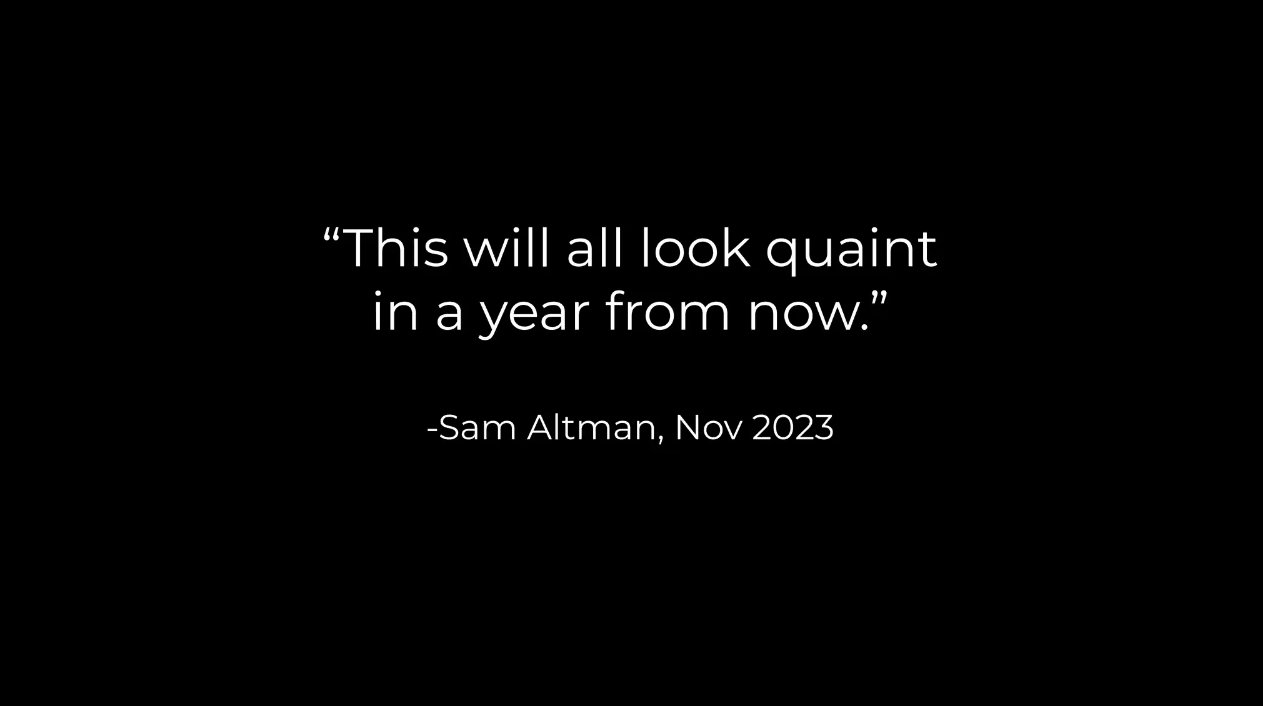
We can’t wait to find out what the future has in store for AI and its impact in the world of Product!
Watch the full talk here:
Metrics That Matter: Bridging User Needs and Board Priorities for Business Success
Aliisa’s compelling talk was hard to follow but Trisha Price, CPO of Pendo, absolutely smashed it out of the court with her thought-provoking presentation on Metrics That Matter: Bridging User Needs and Board Priorities for Business Success.
Reflecting on a career spanning three decades, starting as a software engineer and transitioning into product management, Trisha emphasized the need to bridge the gap between user needs and boardroom expectations.
Central to the talk was the concept that in product management, success hinges on more than just launching new features.
In order to drive ROI, we have to focus on driving business outcomes – revenue, retention, adoption, and employee productivity.
As well as outlining key strategies for product success, such as identifying and tracking the right leading indicators, Trisha also highlighted the importance of leveraging AI in Product Management to gain insights that are otherwise difficult to attain and to automate workflows.
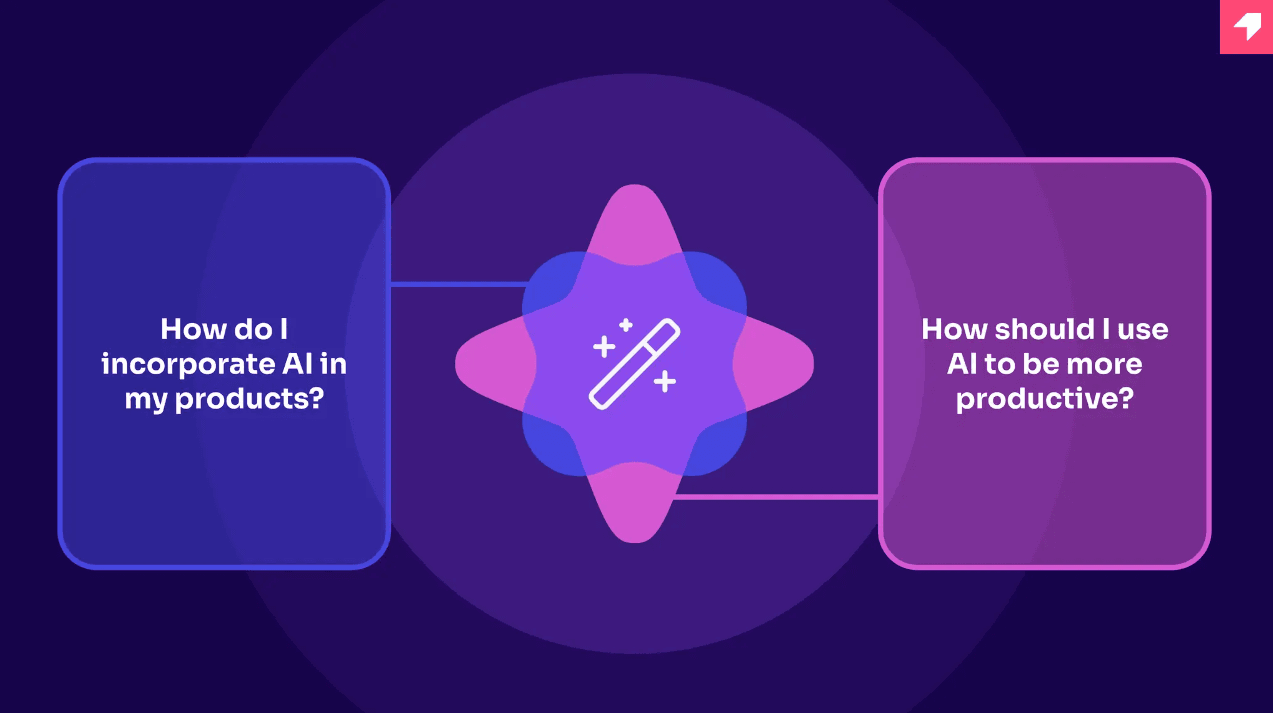
Trisha concluded her talk by reinforcing her central theme: as product leaders, the focus should be on creating products that are not just innovative but also deliver real, measurable value to both users and investors.
Watch the full talk here:
Data-Driven Customer Growth: Navigating Digital Transformation
Speakers:
Nitzan Shaer CEO & Co-Founder, WEVO (Moderator)
Kyle Augustus Kolich VP & GM of Product, Zuora
Rachel Obstler CPO, Heap
Debbie Braney SVP of Global Marketing, Glassbox
In this captivating panel discussion, industry experts explored the critical role of data in driving customer growth and understanding user problems in the digital age.
The panelists highlighted a wide range of themes including:
the power of integrating diverse data sets
the importance of focusing on outcomes rather than outputs
the integration of advanced technology like AI in understanding and predicting customer behavior.
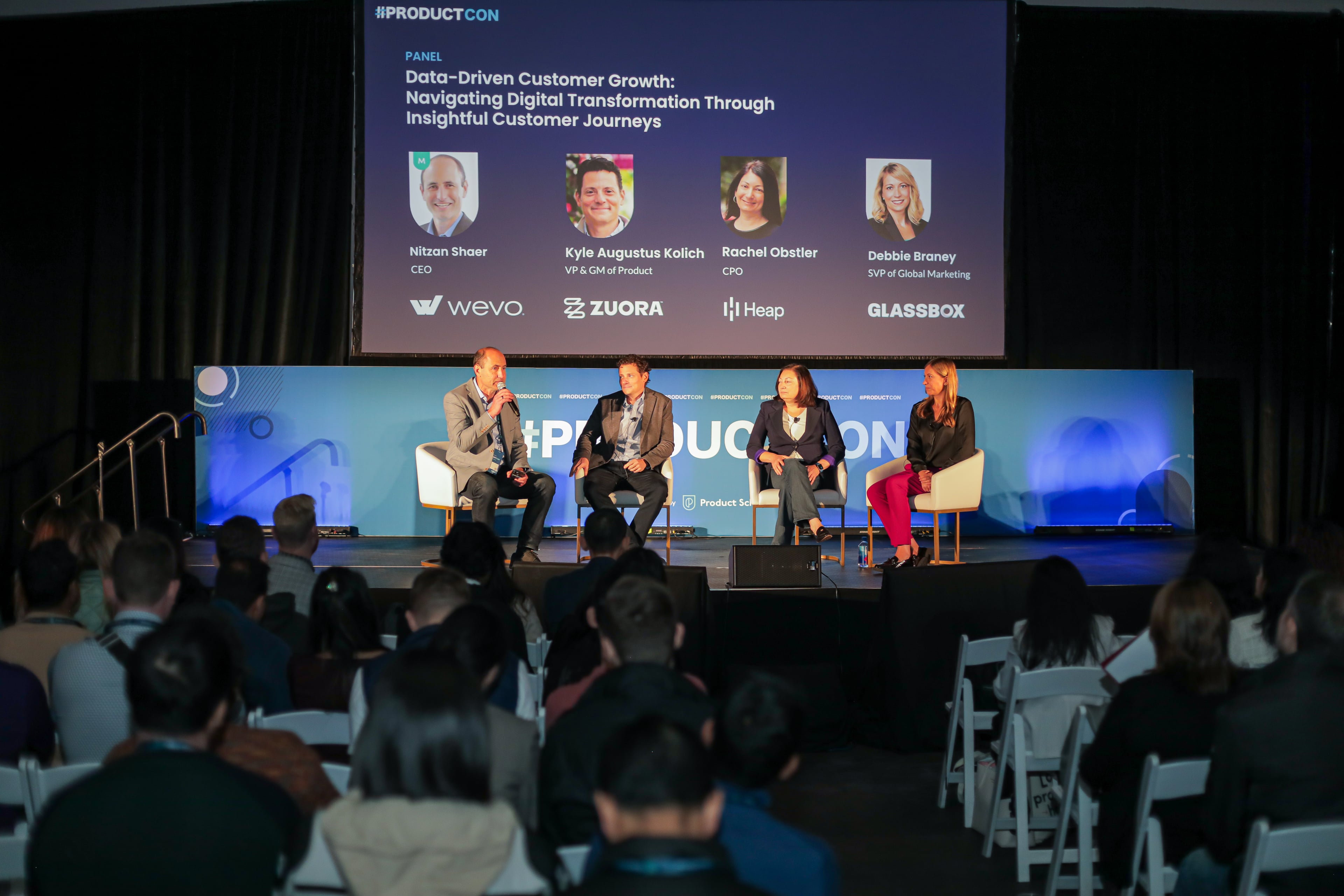
The discussion also addressed the challenges of adopting data-driven systems within organizations. Cultural barriers, the need for constant validation, and aligning organizational metrics were some of the key hurdles discussed. Debbie highlighted the importance of not just collecting data but having the mindset to continuously seek and generate data at every stage of product development.
As the conversation moved towards future trends, the panelists unanimously agreed on the increasing role of AI in making data more accessible and actionable. They envisioned a future where AI not only accelerates learning but also helps in avoiding common pitfalls in data analysis. Kyle noted that the evolution of product management would require faster development and decision-making processes, as technology continues to advance rapidly.
The session concluded with a call to embrace these insights and use them as guiding principles in the ever-evolving field of product management.
Watch the panel discussion in full here:
Designing Great Products: The Power of Design and Leadership
Rounding off before lunch we had another stand-out talk from Robert Brunner, Chief Designer at Beats by Dr Dre on Designing Great Products: The Power of Design and Leadership. This was one of the most visually pleasing presentations we’ve ever seen and certainly one we won’t forget.
In his inspirational talk, Robert asked us to consider what it is that takes design from good to great, as well as to reflect on the key role that leadership plays in product design, and the importance of craftsmanship.
To design great products, Robert reminds us that
HAVING AMAZING TECHNOLOGY DOES NOT MATTER IF NOBODY GETS IT, NEEDS IT, OR WANTS IT.
To design a product that’s truly great, we need to create:
Something RELEVANT That is UNIQUE Something that is CONSIDERED It is, in fact, DESIRABLE It is RESOURCE-WORTHY It should generate VALUE. It should be TRANSFORMATIVE.
Robert rounded off his inspiring talk with the following tips for achieving greatness in product design:
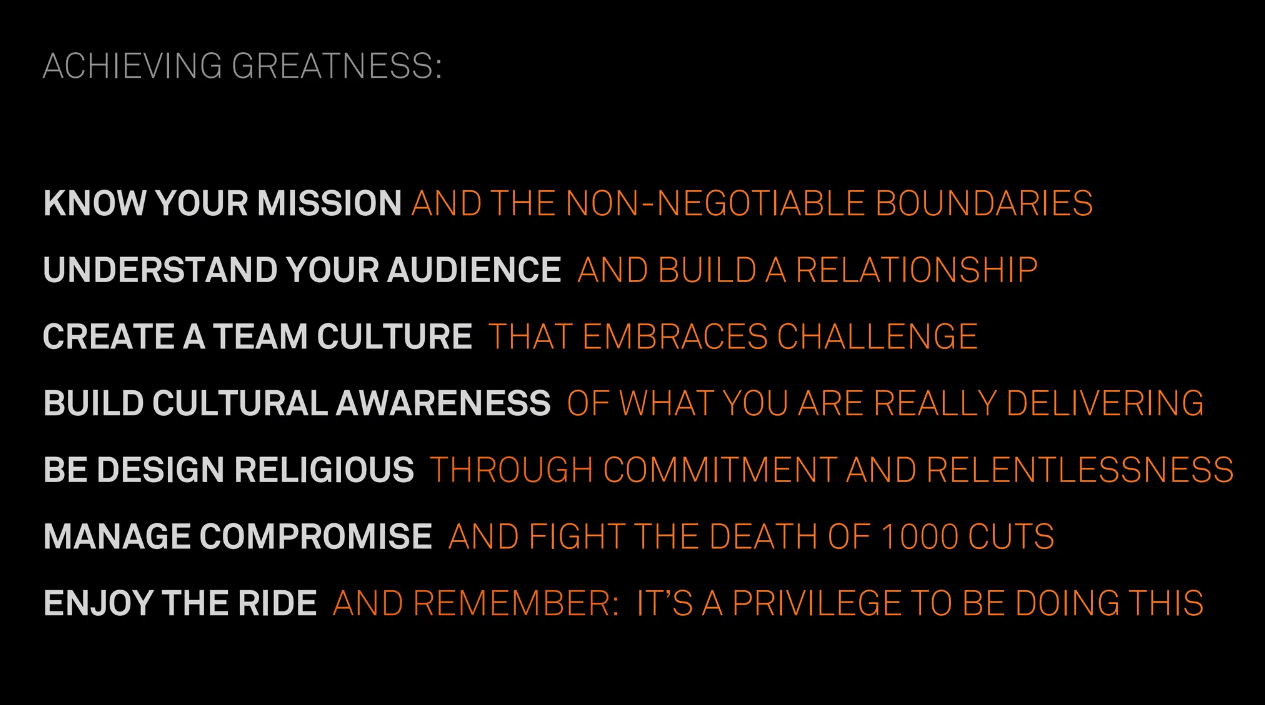
Watch the full talk here:
Customer-Centric PM: Anticipating Needs Across the Product Life Cycle
Refueled and reenergized after a yummy networking lunch, we were treated to a fantastic presentation by Lisa Yokoyama, SVP and Head of Product at American Express.
In her enlightening talk, Lisa shared valuable insights into American Express’s approach to product development and essential qualities for product managers.
Are you a dreamer or are you a driver?
Lisa highlighted that to successfully develop products from concept to launch (zero to one), product managers need to be both dreamers and drivers:
Dreamers: In the initial stages, product managers should be 'dreamers' - they need to be inspired and imaginative. This involves generating new ideas, considering what could be different, and exploring potential improvements to customer experiences. It’s about looking at broader market trends, customer needs, and technological advancements to conceive innovative product ideas.
Drivers: However, having a vision isn’t enough. Product managers also need to be 'drivers'. This means having a bias for action – the ability to take those creative ideas and turn them into concrete plans and products. Drivers are focused on execution, moving forward with momentum, and turning the imagined vision into reality.
To excel in product development, Lisa also emphasized the importance of being adept at three key phases: inspiration, articulation, and feedback.
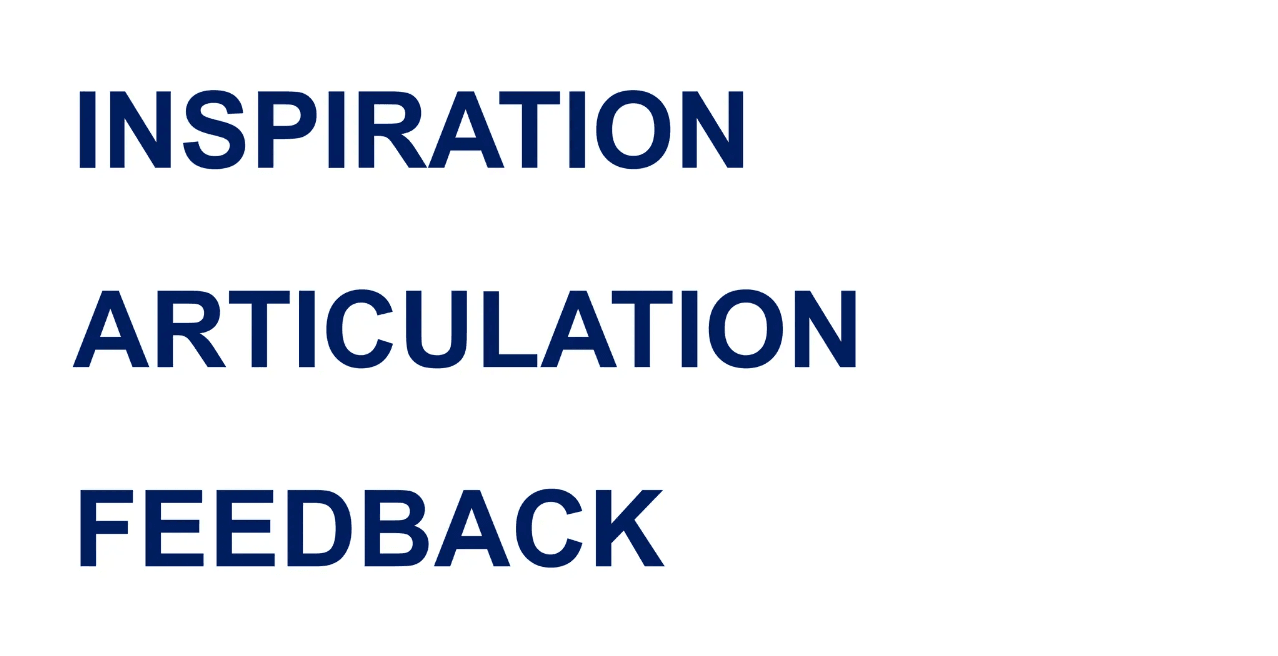
Inspiration: This phase involves generating ideas and being motivated by a hint of an opportunity that suggests something could be improved. Lisa encourages her team to explore various questions, like market trends, customer behaviors, gaps in offerings, regulatory changes, personal pain points, and new technologies. Product managers need to be dreamers and drivers, imagining what could be and taking actionable steps to make it a reality.
Articulation: This step is about clearly defining what the product does, its target audience, how it solves problems, and how it operates. Product managers need to be outcome-driven, empathetic, and tenacious. They must understand the business context and customer outcomes they are aiming for and be able to navigate the complexities of a large organization like American Express.
Feedback: In this phase, it's crucial to obsess over the customer experience, analyze both qualitative and quantitative feedback, and prioritize accordingly. Product managers should passionately drive the product to launch and then switch to a dispassionate view to objectively assess feedback and data.
Watch the full talk here to understand more about the multifaceted role of product managers and the importance of customer-centricity in successful product development:
The Future of Product Management
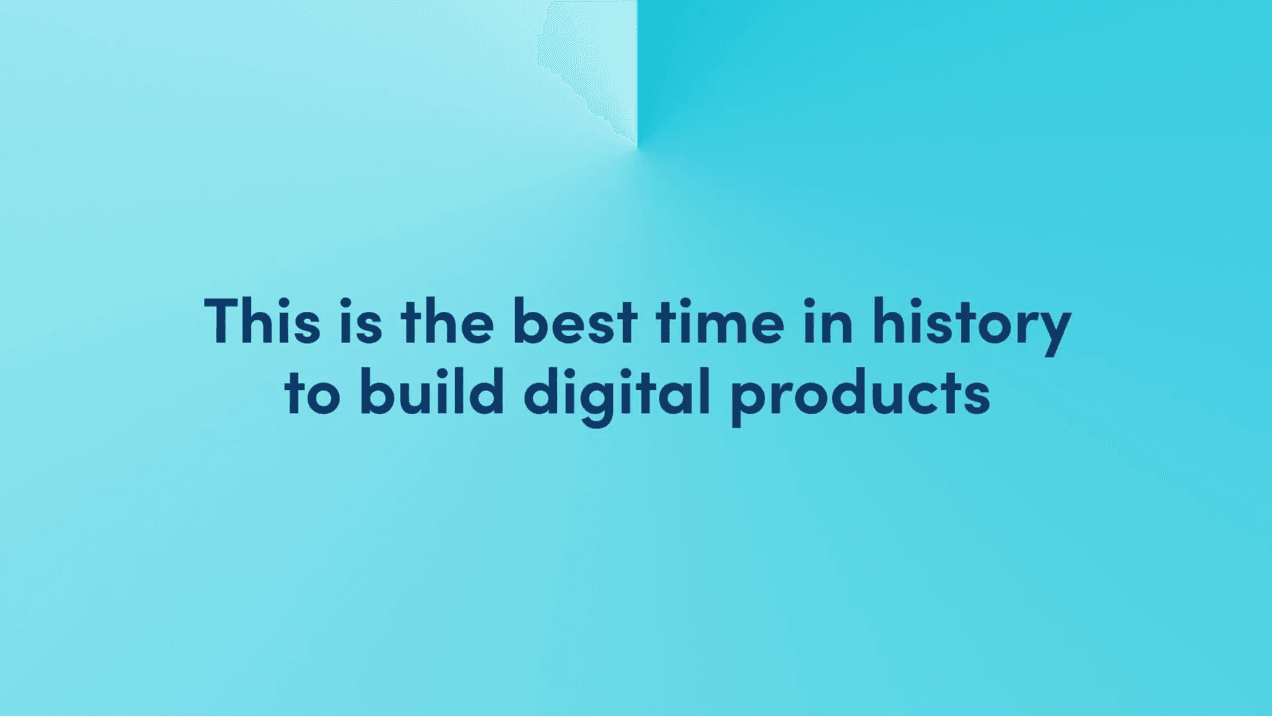
Next up was our very own Carlos Gonzalez de Villaumbrosia, founder and CEO of Product School.
He discussed the significant evolution in product management over the past decade, transforming from a relatively obscure role to a strategic function in most companies. The rise of the Chief Product Officer (CPO) in major corporations, including those outside the high-tech sector, marks this shift.
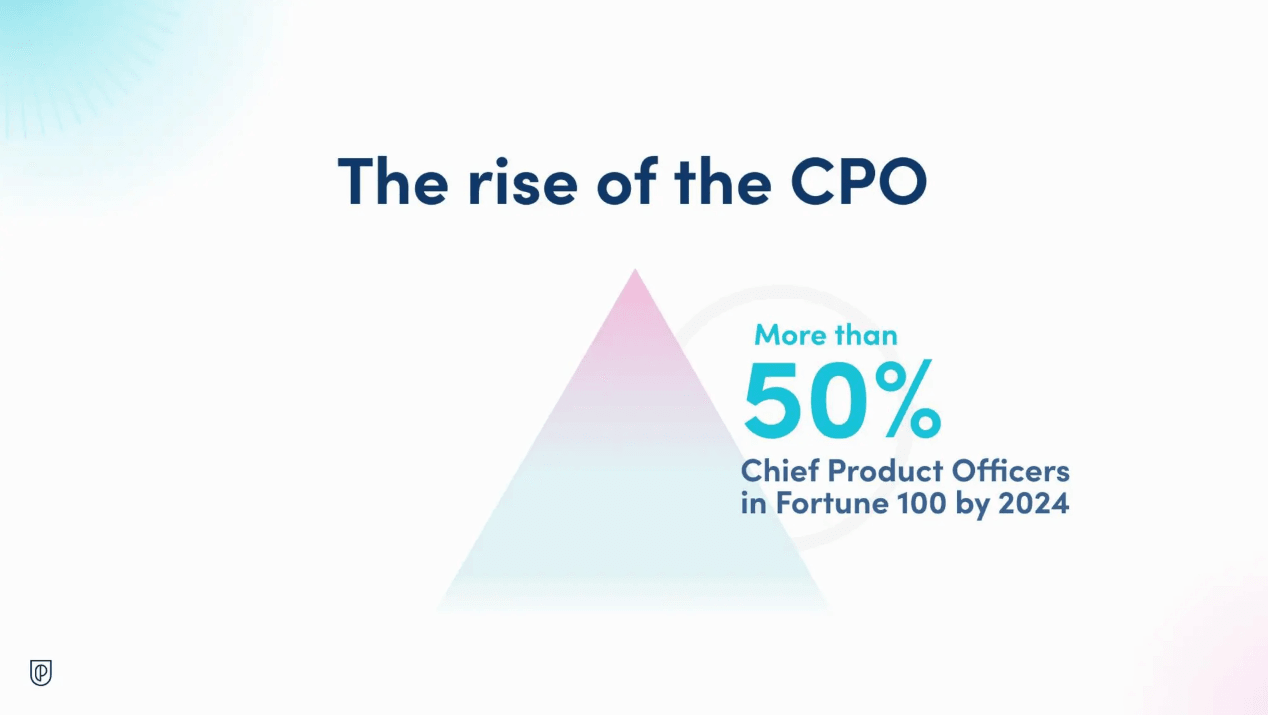
Carlos outlined three key developments fueling this transformation:
Education in Product Management: There's a growing awareness and educational opportunities in product management, both in universities and within companies through programs like Associate Product Manager (APM) programs.
Availability of Specialized Tools: The advent of tools specifically designed for product managers, like Figma for prototyping and no-code/low-code platforms, empowers professionals without a technical background to create and innovate efficiently.
Product as a Revenue Generator: Product management is increasingly seen as a revenue driver rather than a cost center. This perception shift is due to digital transformation across industries, where companies are leveraging technology to create products that directly generate revenue.
However, he also acknowledged challenges, such as the significant layoffs in the tech industry, while noting that product teams were least affected due to their critical role in generating revenue and driving company growth. He pointed out the abundance of open roles in product management, indicating a bright future for the field.
Looking ahead, Carlos identified three trends for the future of Product:
Product's Role in Revenue Growth: There's a shift in the product function's focus from merely adding user value to being accountable for revenue growth. CPOs are acting more like general managers, sometimes even owning the profit and loss (P&L).
Product at the Intersection of Everything: Product management is no longer just about technology, design, and marketing; it now intersects with sales, customer success, data, research, etc. This broadening scope has led to the creation of new roles within the product team, including product marketing.
Challenges in Acquiring and Retaining Product Talent: Despite the demand, acquiring and retaining top product talent remains challenging. Companies that invest in specific, advanced training and development for their product teams are more likely to retain their talent.
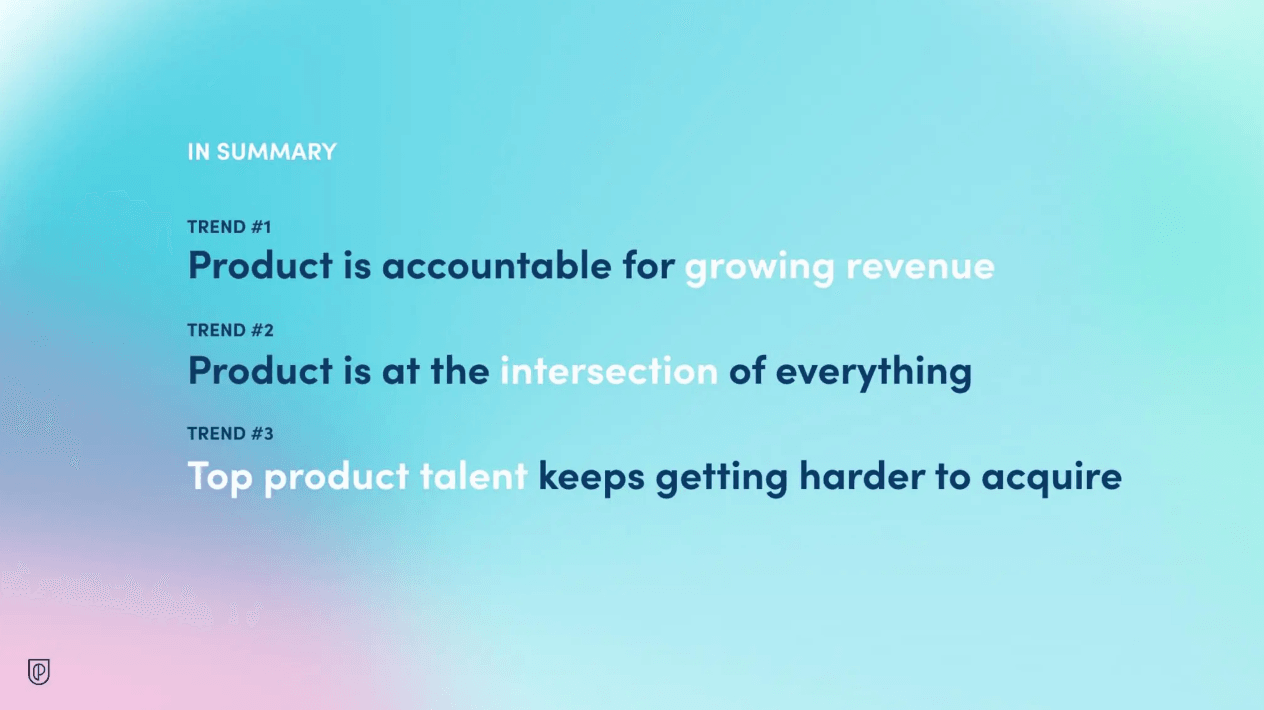
Ultimately, Carlos shared his optimism about the future of product management, emphasizing that “the product role is more strategic than ever” and encouraging product leaders to seize the opportunities presented by this transformation.
Watch the full talk here:
The Colliding Worlds of Product Management and Product Marketing
Speakers:
Jason Gatoff Course Creator and former VP of Product Marketing at Pendo
(Moderator)Darshil Gandhi Principal Product Marketing Manager, Amplitude
Karan Mavai Senior Director of Product, UserTesting
Ritu Kapoor CMO, Productboard
In this dynamic panel discussion, industry experts delved into the increasingly intertwined roles of product marketing and product management in the tech sector.
Key topics included the challenges of product pricing and packaging decisions, competitive strategies, and the ownership of customer insights. The panelists agreed that effective collaboration starts with executive alignment and early involvement of both teams in the planning process. They discussed how both roles need to focus on customer-centricity, with product marketers concentrating on executive buyer feedback and product advocacy, while product managers focus on product-specific enhancements and user feedback.
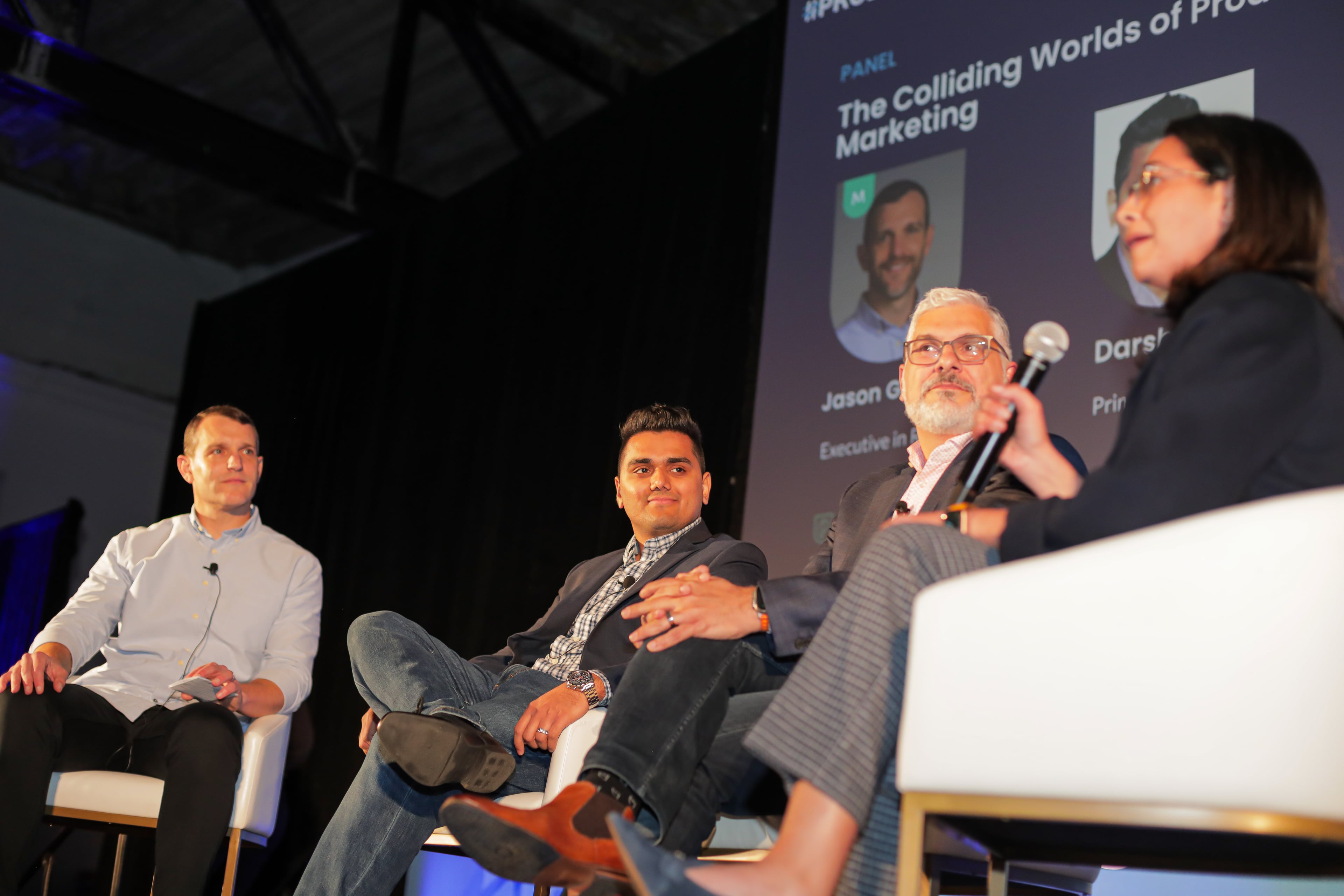
Looking towards the future, the panelists predicted a closer integration of product marketing and growth marketing roles, driven by the increasing importance of data in decision-making. However, they also emphasized the necessity of distinct roles within product teams to cover the breadth of responsibilities effectively.
The panel concluded by encouraging product managers to collaborate closely with their marketing counterparts, emphasizing the importance of understanding buyer personas and aligning product development with market needs for successful product launches.
Watch the full talk here:
Beyond the Cart: Unleashing AI Wonders with Instacart’s Shopping Revolution
Last, but certainly not least, we rounded off with the exceptional closing talk Beyond the Cart: Unleashing AI Wonders with Instacart’s Shopping Revolution by Daniel Danker, Founder and CPO of Instacart.
From optimizing search results and recommendations based on user behavior and preferences to predicting inventory levels and suggesting replacements for out-of-stock items, AI plays a crucial role in the Instacart app. This technology isn't just limited to the customer-facing features but also extends to backend processes that aid Instacart shoppers in order routing and fraud detection.
Instacart has helped people offload the physical work of grocery shopping. Now, we have the opportunity to move upstream, helping people with the mental work of shopping – thinking about what to eat, household planning, remembering everything.
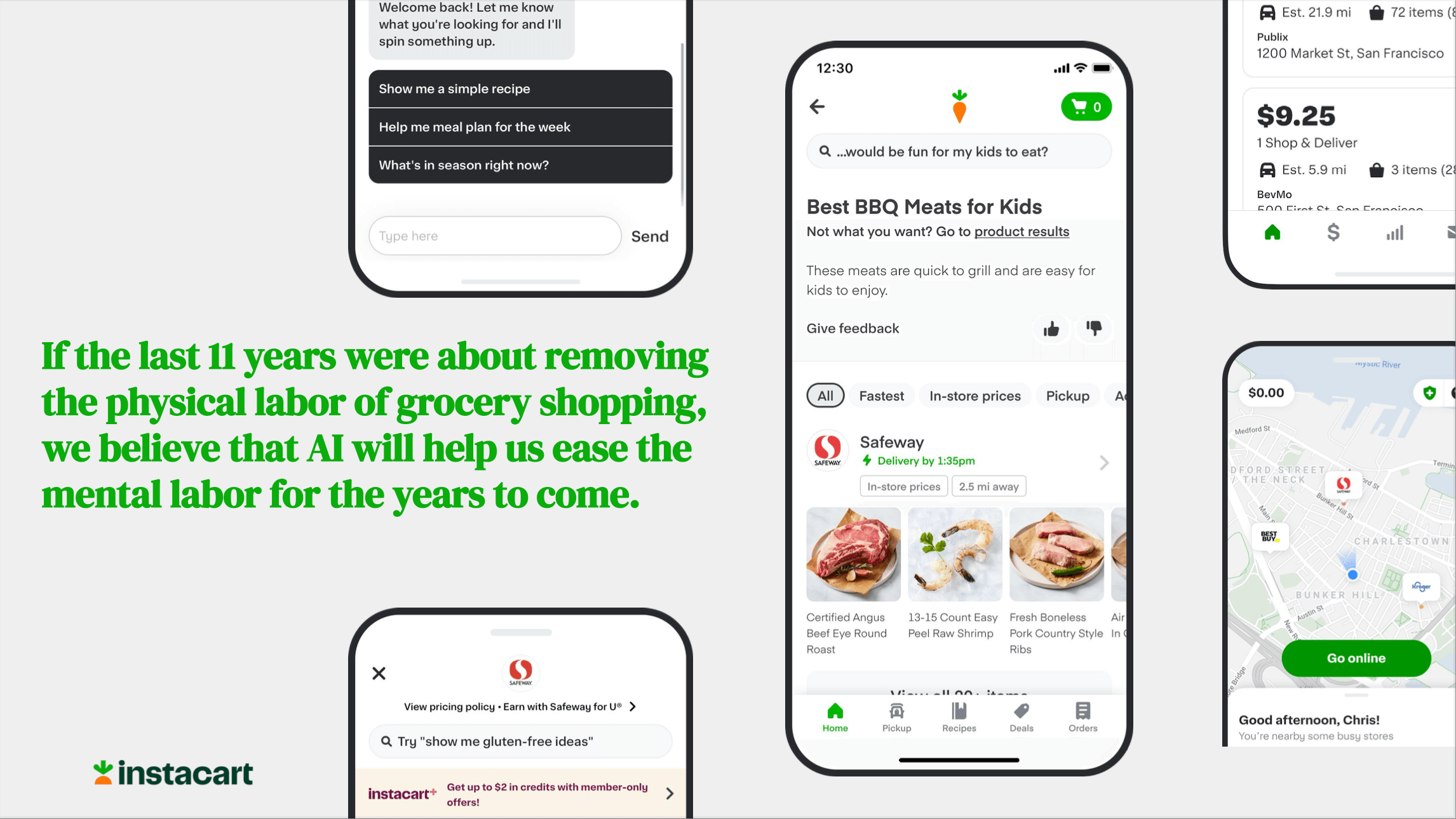
A key point was the differentiation between AI and traditional machine learning. While machine learning uses data to identify patterns, AI goes a step further by creating new, previously impossible use cases. This shift from data-driven pattern recognition to creativity and generation is what makes AI more impactful.
Concluding the talk, Daniel encouraged us to think creatively about integrating AI into our products. The focus was on using AI to enhance product capabilities in ways that were not possible before, rather than forcing AI implementations. This approach, he suggested, could lead to developing products beyond the current realm of imagination.
Watch the full talk here:
Updated: May 6, 2024


